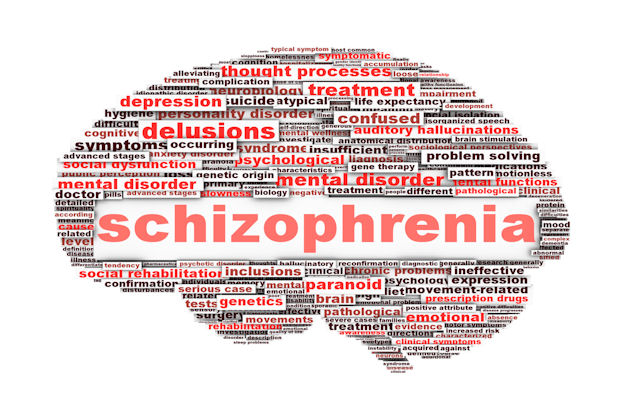Biological Explanations of Offending (Forensic Psychology Model Answers) (Paper 3 Model Answers)
Describe and evaluate one or more of the following biological explanations for offending: atavistic form, genetics, neural. ( 16 marks)
Model Answer
One biological explanation for offending is the atavistic form theory, proposed by Cesare Lombroso in the late 19th century. Lombroso believed that criminals were evolutionary throwbacks to a more primitive stage of human development, characterised by physical features and traits associated with earlier stages of evolution. According to this theory, individuals who exhibited certain physical abnormalities such as asymmetrical faces, large jaws, or excessive body hair were more likely to engage in criminal behavior. Lombroso's theory suggested that criminal behavior was determined by innate biological factors that were passed down through generations.
Another biological explanation for offending is the influence of genetics on criminal behavior. Research has shown that there is a hereditary component to criminality, with studies indicating that individuals with criminal parents are more likely to engage in criminal behavior themselves. Twin and adoption studies have provided evidence for the role of genetic factors in criminality, showing higher concordance rates for criminal behavior in identical twins compared to fraternal twins and biological parents compared to adoptive parents. Genetic factors may influence a range of traits such as impulsivity, aggression, and risk-taking behavior, which are associated with an increased likelihood of engaging in criminal activities.
In terms of neural explanations, research has explored the relationship between brain structure and functioning and criminal behavior. Studies have found differences in brain structure, particularly in areas related to impulse control, decision-making, and emotional regulation, in individuals with a history of criminal behavior compared to non-offenders. Additionally, abnormalities in neurotransmitter systems such as dopamine and serotonin have been linked to antisocial and aggressive behavior. These findings suggest that neural factors play a role in predisposing individuals to engage in criminal activities.
In evaluating these biological explanations, it is important to consider their limitations. Firstly, the atavistic form theory has been widely criticised for its reliance on outdated and unscientific notions of criminality based on physical appearance. The theory has been largely discredited, as it fails to account for the complex social and environmental factors that contribute to criminal behaviour. Similarly, while genetics has been found to have some influence on criminality, it is crucial to recognise that genes do not determine behavior outright. Genetic factors interact with environmental influences in shaping behavior, and it is the interaction between the two that ultimately determines an individual's propensity for criminal behavior.
Furthermore, the neural explanations of criminal behavior face challenges in establishing causality. While there are associations between brain abnormalities and criminal behavior, it is difficult to determine whether these differences in brain structure and function are the cause or the consequence of engaging in criminal activities. Additionally, the influence of social and environmental factors on brain development and functioning cannot be ignored. It is essential to recognise that biological factors interact with social, psychological, and environmental factors in complex ways, and a holistic understanding of criminal behavior must consider all these influences.
Overall, while biological explanations provide valuable insights into the potential factors influencing criminal behavior, they are not sufficient on their own to fully explain the complexity of criminality. A comprehensive understanding of criminal behavior requires considering a range of factors, including social, psychological, and environmental influences, in conjunction with biological factors
Discuss neural explanations for offending behaviour. ( 8 marks)
Model Answer
Neural explanations for offending behavior focus on the role of irregularities in neurotransmitters in influencing violence and aggression. Studies have found that high levels of noradrenaline, a neurotransmitter associated with arousal and stress response, have been linked to increased aggression and violent behavior. Similarly, low levels of serotonin, a neurotransmitter involved in mood regulation and impulse control, have been associated with greater impulsivity and a higher likelihood of engaging in aggressive acts. Additionally, dopamine, although indirectly linked, plays a role in addiction and substance abuse, which can contribute to criminal behavior.
A specific genetic factor that has been studied in relation to neural explanations for offending behavior is the shortened version of the MAOA gene. This gene is responsible for producing an enzyme that breaks down neurotransmitters dopamine and serotonin. Individuals with the shortened MAOA gene may have altered levels of these neurotransmitters, which can influence their propensity for aggressive and impulsive behavior.
When discussing the implications of neural explanations for offending behavior, one consideration is the concept of biological determinism. Accepting that offending is solely due to biological factors can have significant implications for the justice system and how we deal with offenders. If individuals are seen as biologically predetermined to engage in criminal behavior, it may shift the focus away from rehabilitation and interventions aimed at addressing underlying social and psychological factors contributing to offending. This raises ethical questions about fairness and the responsibility of individuals for their actions.
Furthermore, a limitation of neural explanations for offending behavior is reductionism. By solely focusing on biological factors, there is a risk of oversimplifying the complex nature of criminal behavior. Other factors, such as the social context, substance abuse, mental illness, and upbringing, also play significant roles in shaping behavior. Neglecting these factors can lead to an incomplete understanding of offending and hinder the development of effective interventions and prevention strategies.
Evaluate the atavistic form explanation for offending.(6 marks)
Model Answer
One limitation of the atavistic form explanation is its reliance on outdated and flawed scientific methods. Lombroso's research primarily focused on measuring physical features such as skull size, facial asymmetry, and body proportions to determine criminal tendencies. However, modern scientific advancements have discredited many of Lombroso's measurements as unreliable indicators of criminality. The use of phrenology and anthropometry in assessing criminal predisposition has been widely criticised for lacking empirical validity and scientific rigor.
Another critique of the atavistic form explanation is its deterministic view of criminal behavior. By attributing criminal tendencies solely to inherited physical traits, this theory neglects the influence of environmental and social factors in shaping an individual's propensity for offending. Criminal behavior is a complex interplay of genetic, psychological, social, and environmental factors, and reducing it to physical characteristics oversimplifies the intricate nature of criminality. The atavistic form explanation fails to account for the influence of socio-cultural factors, socio-economic disparities, and life experiences that can contribute significantly to criminal behaviour.
In addition, the atavistic form explanation has been accused of promoting stigmatisation and discrimination. Lombroso's theory associated physical traits, such as a prominent jaw, low forehead, or abnormal cranial shape, with criminality. These assumptions led to the labeling and marginalisation of individuals who possessed these features, perpetuating harmful stereotypes and biases. Such stigmatisation can have severe consequences, including unjust profiling, prejudiced treatment, and social exclusion.
Discuss biological explanations of offending behaviour.( 16 marks)
Model Answer
Biological explanations of offending behavior propose that certain genetic and neurological factors contribute to the predisposition of individuals to engage in criminal activities. One biological explanation is based on genetic factors, specifically the influence of "criminal" genes. Research has identified the monoamine oxidase A (MAOA) gene, which regulates levels of brain serotonin, as a potential genetic contributor to criminal aggression. Variants of the MAOA gene associated with lower levels of serotonin have been linked to increased impulsivity, aggression, and antisocial behavior. This genetic explanation suggests that individuals with specific genetic variations may have a higher propensity for engaging in criminal acts.
Another biological explanation focuses on brain pathology and its potential influence on offending behavior. Studies have observed a correlation between abnormalities in brain structure and function and criminal behavior. For example, research has explored the relationship between psychopathy and abnormalities in the frontal lobe and amygdala, which are involved in emotional regulation and decision-making processes. Dysfunction in these brain areas may contribute to the reduced ability to experience empathy and control impulsive behavior, characteristics commonly observed in individuals with psychopathic traits. This suggests that neurological factors, possibly linked to both genetic predispositions and early life experiences, may play a role in the development of criminal tendencies.
In discussing biological explanations of offending behavior, it is important to consider several factors. Firstly, biological explanations do not provide a complete understanding of criminal behavior. While genetics and brain pathology may contribute to individual differences in susceptibility to offending, they should be viewed as interacting with other factors such as environmental influences, social circumstances, and psychological processes. Criminal behavior is a complex phenomenon that cannot be solely attributed to biological factors.
Secondly, there is a risk of biological determinism, which oversimplifies the causes of criminal behavior by placing excessive emphasis on biological influences. This reductionistic view neglects the significant impact of social, cultural, and psychological factors on individuals' engagement in criminal activities. Thirdly, the use of biological explanations raises ethical concerns regarding potential stigmatisation and discrimination. Labeling individuals as "genetically predisposed" or "brain-pathology affected" may perpetuate negative stereotypes and hinder efforts toward rehabilitation and reintegration.
Biological explanations of offending behavior offer insights into the role of genetics and brain pathology in shaping criminal tendencies. However, these explanations should be considered alongside other factors and should not overshadow the complex interplay of environmental, social, and psychological influences. Additionally, caution must be exercised to avoid deterministic views and potential stigmatisation associated with biological explanations. A comprehensive understanding of criminal behavior necessitates an integrative approach that considers multiple perspectives and acknowledges the multidimensional nature of offending.
Outline one biological explanation for offending.(2 marks)
Model Answer
One biological explanation for offending is the influence of genetic factors. Research has identified specific genes, such as the MAOA gene, that are associated with aggression and antisocial behavior. These genes can affect the regulation of neurotransmitters in the brain, potentially leading to an increased predisposition towards engaging in criminal activities.
Outline and compare two explanations for offending. Refer to evidence in your answer.
(Total 16 marks)
Model Answer
One explanation for offending is rooted in biological factors, particularly genetics. Research has shown a link between certain genetic markers and criminal behavior. For example, studies on twins and adopted individuals have provided evidence for the role of genetics in offending. Twin studies have shown higher concordance rates for criminal behavior in identical twins compared to fraternal twins, suggesting a genetic influence. Adoption studies have also demonstrated a higher likelihood of criminal behavior among individuals who have biological parents with a criminal history. Additionally, neurological mechanisms have been explored, such as abnormalities in brain structures like the amygdala and frontal lobe, as well as brain maturation retardation hypothesis in individuals with Antisocial Personality Disorder (APD). Chromosomal abnormalities, such as XYY syndrome, have also been associated with an increased risk of engaging in criminal behavior. It is important to acknowledge early theories, such as the atavistic form and somatotype, that proposed a biological basis for criminality.
In contrast, the psychological perspective, as exemplified by Eysenck's theory, emphasises personality traits as predictors of offending behavior. Eysenck suggested that individuals with a combination of high neuroticism and high extraversion, along with elevated levels of psychoticism, are more prone to engage in criminal activities. This theory focuses on the interaction between personality traits and environmental factors. Eysenck argued that individuals with certain personality characteristics are more likely to seek out risky and impulsive behaviors, increasing their likelihood of committing crimes.
It is important to note that both perspectives have their strengths and limitations. The biological explanation provides valuable insights into the genetic and neurological influences on offending behavior. However, it is reductionistic and overlooks the complex interplay of social and environmental factors in criminality. The psychological perspective, while considering the role of personality, may oversimplify the multifaceted nature of criminal behavior by neglecting the impact of biological factors.
Additionally, both explanations can be criticised for their deterministic tendencies, as they imply that criminal behavior is solely determined by either genetics or personality traits, disregarding the potential for individual agency and the influence of social context. To develop a comprehensive understanding of offending behavior, it is essential to consider multiple factors, including biological, psychological, and social dimensions, and examine their interactions and intersections.











